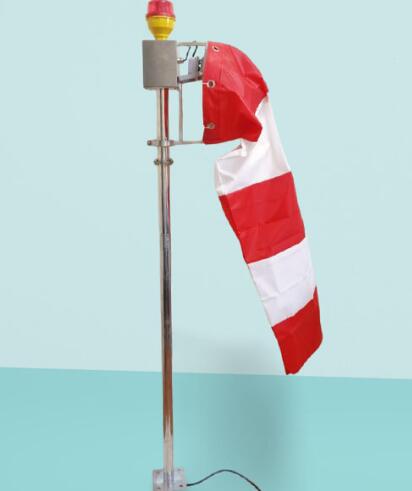Windcone: The Essential Visual Guide for Aviation Wind Assessment
In the dynamic world of aviation operations, the windcone (or windsock) remains one of the most reliable and universally recognized wind indicators. These simple yet effective devices provide pilots with immediate visual information about wind direction and speed, playing a critical role in safe takeoffs, landings, and ground operations. As aviation technology advances, the humble windcone continues to maintain its fundamental importance at airports, helipads, and industrial sites worldwide.
Core Functions of Windcone Systems
Modern windcone installations serve multiple vital purposes:
Provides real-time wind direction visualization
Indicates approximate wind speed through inflation levels
Enhances situational awareness for pilots and ground crews
Complies with international aviation safety standards
Serves as a backup to electronic wind measurement systems
Technical Specifications and Design Features
1. Visual Performance Characteristics
High-visibility orange/white striped pattern (ICAO standard)
Minimum length of 3.6 meters for airports
360° free-rotation capability
UV-resistant fabric for long-term color retention
2. Structural Components
Aircraft-grade aluminum or stainless steel frame
Corrosion-resistant hardware
Low-friction rotating mechanism
Reinforced fabric with rip-stop technology
3. Operational Parameters
Activates at wind speeds as low as 3 knots
Fully extended at 15 knots
Withstands winds up to 75 knots
Operating temperature range: -40°C to +60°C
Regulatory Compliance Standards
Windcone installations must meet stringent requirements from:
ICAO Annex 14 (Aerodrome Standards)
FAA AC 150/5345-27E (Wind Cone Assemblies)
EASA CS-ADR-DSN (European Aviation Requirements)
CASA Manual of Standards (Australian Regulations)
Specialized Applications
1. Airport Operations
Runway threshold indicators

Taxiway guidance systems
Apron area wind monitoring
2. Heliport Facilities
Hospital rooftop helipads
Offshore platform landing zones
Urban vertiport installations
| windcone |
3. Industrial Sites
Chemical plant safety systems
Crane operation wind monitoring
Hazardous material handling areas
4. Military Installations
Forward operating base wind indicators
Aircraft carrier landing systems
Remote airstrip installations
| windcone light |
Operational Advantages
1. Safety Enhancements
Immediate visual wind assessment
No power requirement for basic operation
All-weather reliability
Intuitive interpretation by pilots
2. Maintenance Benefits
Minimal moving parts
Easy fabric replacement
No calibration required
Long service life with proper care
3. Environmental Considerations
Zero energy consumption
Fully recyclable materials
No electronic waste
Sustainable manufacturing options
Installation Best Practices
For optimal windcone performance:
Select appropriate height based on application (typically 6m for airports)
Ensure unobstructed airflow from all directions
Position for maximum visibility from approach paths
Use proper foundation and mounting hardware
Establish regular inspection protocols
Technological Integration
Modern windcone systems now incorporate:
LED illumination for nighttime visibility
Wireless wind speed transmitters
Remote monitoring capabilities
Automated condition reporting
Integration with AWOS/ATIS systems
Future Developments
Emerging innovations in windcone technology include:
Solar-powered lighting systems
Smart materials with enhanced durability
Integrated weather station connectivity
AI-assisted wear detection
Augmented reality visualization aids
The windcone remains an indispensable tool in aviation safety, combining timeless functionality with modern technological enhancements. Its simplicity, reliability, and universal recognition make it a critical component of visual navigation systems worldwide. As aviation continues to evolve with advanced instrumentation and digital systems, the windcone maintains its relevance as an essential backup and immediate visual reference. For airport operators, flight crews, and aviation safety professionals, proper windcone installation and maintenance represent a fundamental commitment to operational safety. The future will likely see these devices become smarter and more integrated while retaining their core function as the aviation industry's most trusted wind indicator.
